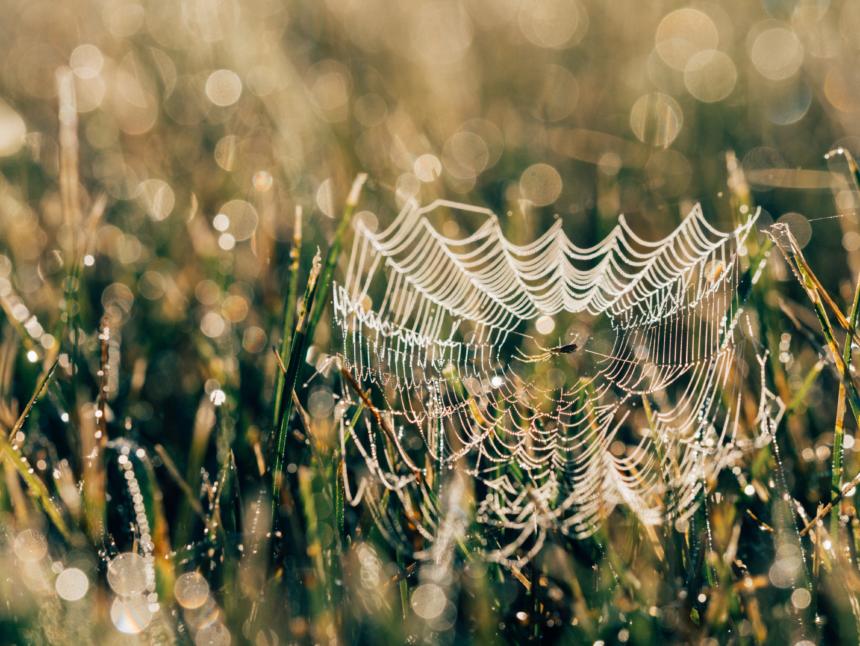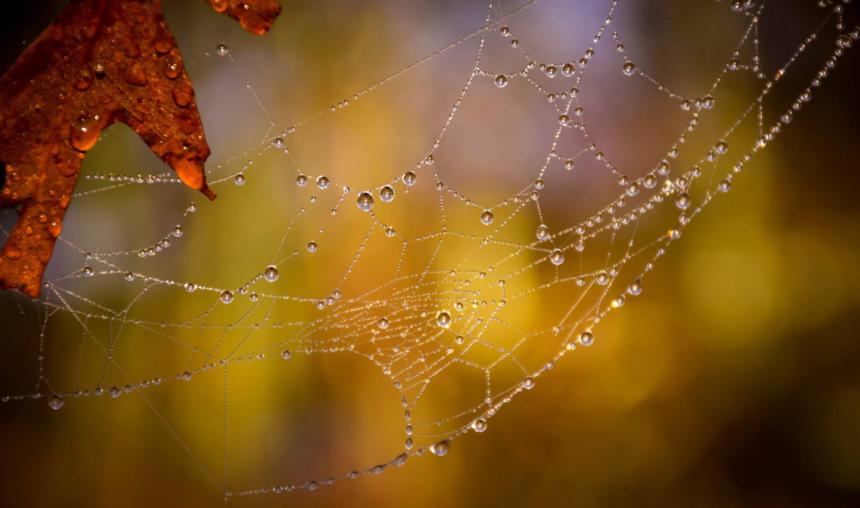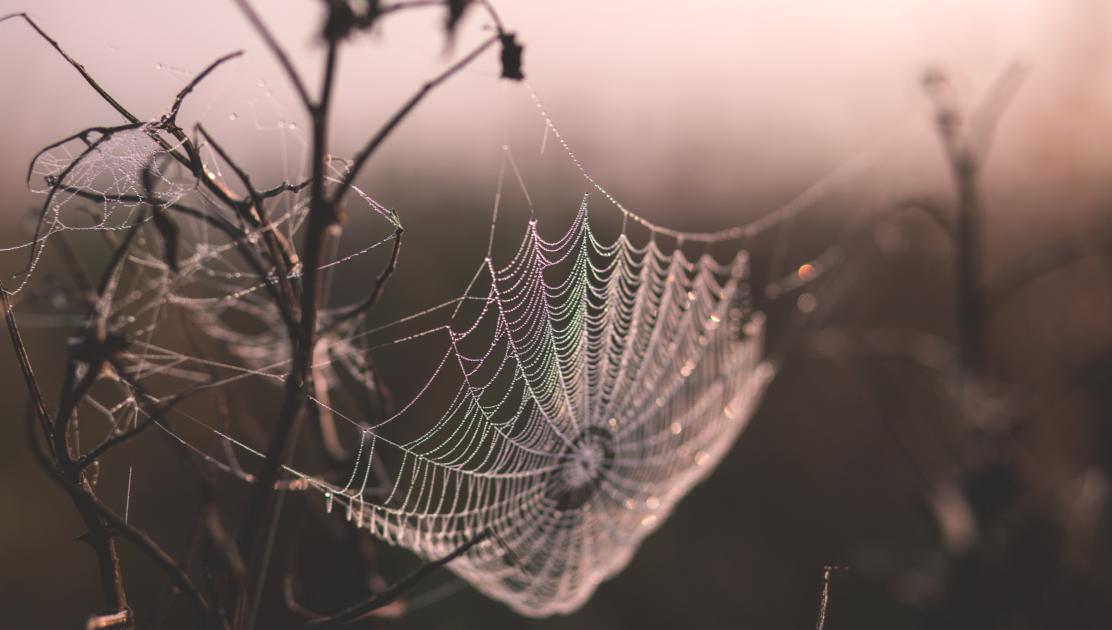#WeToo
Personhood and the Embodied Collective Non-Dual
By Gabrielle Stoner“Just as the physical world is comprised of integrally related particles, so too, we are integrally related to one another and to (nonhuman) creation. We live in a web of relationships. As we affect this web by our actions, so too are we affected by it. Conversion is accepting interdependence as the definition of life in the universe.”
—Ilia Delio, Christ in Evolution
“Mama can you draw me our spider web again before you go?”
My five year old’s large eyes looked up at me as he hugged my leg. I was somewhere between making lunches, burning breakfast, and desperate for more coffee. I was late, as usual, still not having packed for my flight later that morning. His warm body and innocent face was all I needed to step out of the frenzy.
“Of course, baby.”
I leaned down with a black pen and took his hand in in mine and drew a tiny little spider web on the back of his hand.
I don’t know when the “spider web” became a thing for us. Somewhere over the turmoil of personal transitions in the last two years, I began explaining to my children that my heart and their hearts were always connected, that life is like series of interconnecting spider webs, and that anytime they felt scared, or needed me, they could always sense me—or anyone they loved—through the great spider web of life.
Kneeling, so we could be the same height, I said the words that have become our part of our ritual: “Everywhere you go, I go. Everything you feel, I feel. You can talk to me and send me love on our spider web anytime you want and I’ll be sending you so much love back. The spider web will never, ever break. We’re always connected.”
This little ritual hasn’t just been a sweet exercise of comfort. The spider web is my attempt as a mother to give my kids a more accurate picture of reality and their place in it. It’s a reminder of the illusion of individualism, a practice of recovering an identity firmly grounded in the interconnectedness of all things.
I have felt that reminder of this greater web of life in a variety of ways in the past several months as our collective consciousness has been ignited in a cultural shift toward no longer tolerating sexual misconduct in government, entertainment, and the workplace. Along with the rest of the country, I have watched as powerful, “likeable” and unlikeable men, one after another, were exposed for having abused, assaulted, and harassed female colleagues, employees, friends, acquaintances, and children.
In October of 2017, during the viral #MeToo movement, men across the country watched in horror as their mothers, wives, girlfriends, and daughters came forth on social media with their own harrowing #metoo tales of micro and macro aggression at the hands of men (and sometimes women). The accused were people that seemed nice, that were “likeable,” friends or colleagues. The public began to realize how inaccurate our surface impressions can truly be, and how deeply buried and hidden these unconscious shadow behaviors can be from our collective awareness.

During this year’s Golden Globes, Seth Meyers nervously joked to the room full of “TIME’S UP” supporters that the night would represent the first occasion in some time when men didn’t have to be nervous about their name being called out. While it’s easy to be dismissive toward Hollywood’s often token efforts for change, most of the women I know who watched Oprah’s rousing speech felt truly represented in that moment, and some even expressed feeling—for the first time—hope for a different kind of future.
One paradox of the present moment is that it’s hard to imagine this protest happening without the election of our current president serving as the spark. The Women’s March on Washington was an early indication of the collective exhaustion at the blatant racism and misogyny on display. Without understating the deeply harmful effects that his and his administration’s actions are having on many communities in this country, surely the dynamic laws of evolution are also at play in all of this. For better or worse, we are living in a cultural moment of seeing. A mirror is being held up in which the veil has been parted between what we’d like to believe we are—an evolved, rational, conscious society—and the much less attractive reality of the ongoing intersectional oppression at the hands of established systems of power.
However, in order for this moment to bear lasting fruit—to be truly evolutionary—it cannot be reduced to another binary conversation about the nature of oppression in exposing patriarchy. Instead, what is needed is a deeper understanding of the way that any systemic expression of oppression deprives us of a shared identity and participation in the greater whole. Consciousness is collective, not an individual endeavor. Instead of thinking of awakening into consciousness as enlightenment, perhaps we need to think of it in more dynamic terms as that which is and manifests the spirit of what Ilia Delio calls “whole-making.” What needs whole-making now is yet another dimension and symptom of the intersectionality of oppression that points beyond the normal limiting categories. Citing Iris Marion Young’s five categories of oppression—exploitation, marginalization, powerlessness, cultural imperialism, and violence—Dr. Barbara Holmes identifies this idea as a sixth category, “cosmic myopia.” She defines it as “an exclusive focus on closed social and religious systems that negate options of freedom and limit our awareness of intrinsic and cosmic connections.”
What is needed now is mindful attention to the web-like and interconnected nature of these issues, a healing of our cosmic-myopia, which will allow us to comprehend a paradigm shift from the paradigm of power to a paradigm of communion. The root sources of the symptomatic trauma of systemic power are issues of personhood because all bodies—female, trans, queer, male—are intertwined in this necessary evolutionary transition toward a more equitable and life-affirming paradigm in human identity.
If understanding ourselves in terms of binaries is no longer adequate for us as human beings, how can we move beyond binaries in our conversations about power and oppression?
Dr. Beatrice Bruteau suggested “personhood” as the descriptive of a human identity, lived out of mutual affirmation and interconnectedness:
Persons are beings, and Being is self-diffusive, active, and being-communicating… This is how Being is, and Person is fundamental Being. The act of being “I” is not an act of negating another but of affirming.
Personhood, then, is the manifestation of non-duality in its embodied relational expression—a shift in consciousness that rewires how we perceive ourselves. No longer do we perceive ourselves as separate individuals, but as seated in the web of affirming relationships that comprise each “self.” This shift in consciousness transcends the individualism that domination paradigms require, and instead manifests an identity of relationality in which a hierarchy of power cannot exist. In other words, the systems of power are sustained by maintaining the illusion of separateness and isolation that perpetuate “otherness.” Ilia Delio describes the objectification at play in our self-as-separate identity:
When the self relates impersonally to the world, when things in the world serve as mere objects, the “I” gives expression to an “I-it” relationship. Here the self is concerned with pursuing goals and objectives. The primary concern is to control and manipulate, to treat the world, things, and people as a means of satisfying personal needs and desires. One who lives only with an “it” is not human.
This shift in perception isn’t simply my academic perspective, but rather deeply experiential. Nor can I sufficiently emphasize that the transition into a new hopeful horizon of person-identity necessitates first the affirmation and healing of each individual body. Cynthia Bourgeault describes the person as “one through whom the whole resounds” by emphasizing the etymology of per– (“through”), and –sonare (“to sound, be heard”). If a person is so described, then we cannot gloss over the urgent need for each “part” to experience the necessary restorative healing and justice before any conversation can be had about evolving our identities to the “whole.” To be heard and seen is the first prerogative and urgent step in the manifestation of a communion paradigm. If we want to have a conversation about non-dual consciousness, it begins with the healing of our bodies, and our relationships to ourselves and each other.

In my own experience of trauma at the hands of power, my life became intertwined with a much larger web of humanity in the experience of powerlessness and violence. Having my own body discounted and agency silenced has completely changed how I experience the dignity of all bodies, human and non-human. Again, it’s how I experience other bodies, not how I think about other bodies. Even after faithfully practicing meditation for eight years, my own trauma has more effectively dunked me into a much deeper, experiential, and embodied knowing of our intertwined and shared collective identity.
This has led me to reflect—as many other meditation practitioners and contemplative educators have—on the inadequacy of “individual meditation” to fully develop the interior spiritual muscle of compassion and the cosmic perception to be able to see one’s self as intertwined in the whole. To paraphrase something I heard from Rev. angel Kyodo williams at a recent gathering, one can “sit” for their whole life and still be an &%$hole. This is not to say the solution is to require traumatic suffering, but it has elucidated for me the extreme potential for a re-wiring of perception to occur—from individual to personhood—in the midst of experiences of trauma, be they micro aggressions throughout one’s whole life, and/or specific events. For those of us in contemplative education, we not only need to be attentive to the ways that the euro-centric approach to contemplation has emphasized individual practices of contemplation, but strive to collectively highlight and develop those dyadic, communal, and ecstatic practices that truly cultivate this identity shift through healing, compassion, and the development of our imagination.
Furthermore, we need to be fully cognizant of how we prioritize and elevate reason in our dialogues about non-duality. At times, the effects of my trauma has short-circuited all of my usual operating systems that promote rationality and intellect and instead has given me a first-hand course on the non-linearity of memory, and the non-dual intelligence and wisdom of the body. It’s a “knowing” we rarely credit anymore in our epistemological explorations or evident in the current popular models used to describe the evolution of consciousness.
It is precisely in the recovery or discovery a more embodied comprehension of consciousness that I believe our evolving collective heart is feeling its way toward. And it is in a re-membering—the experiential sensation that shifts our identity from a singular into the whole—of a deeper shared identity that runs like a current through all of our differences that I believe could meaningfully continue the conversations that have begun in these conversations about power. This identity shift, I believe, lies in shifting our concepts of binary identification markers toward personhood as the desired outcome of the evolution of consciousness in our time.
As I wrestle with how to reconcile this intuition with my own religious tradition’s historical patriarchy and its dominant cisgendered and hetero-normative culture, I confess I sometimes wonder how we will ever transcend the language, values, and norms that are so clearly out of alignment with the very heart and message of Christianity’s founder. And I wonder whether these “values” that were so intertwined with this country’s historical and colonizing origins can be extricated or healed. Our religious traditions are at a crossroads and it will be up to us to manifest a new expression of these traditions in our time, an expression that emphatically proclaims a new possibility of radical inclusivity and cosmic identity.
While at The Mystic Soul conference in Chicago recently, I experienced a glimpse of hope for such an evolutionary expression. For three days, a vibrant beloved community—which centered trans and queer voices of color—gathered to communicate a contemplative multivocality that manifested a far more embodied approach to the deepening of consciousness than I have yet seen or experienced in predominantly white spaces. Change is happening.
And while such change manifests, we each have the opportunity to do our part to participate in its expansive generation. I am committed to do my own work to heal the trauma and internalized messages of the domination paradigm. I am committed to do my own work to be vigilant and intentionally disrupt those messages in myself and in the spaces I live and work. I am committed to do my own part in continuing to engage in those practices of contemplation that engender compassion and community. I am committed to do my own piece that is mine to do in the interconnected, dynamic community of contemplation and action.
And I do my very best to offer my two children a better way to understand ourselves: as part of a spider web of relationships. We can understand ourselves as part of the whole that is yet becoming, as inextricably interrelated, and therefore mutually dependent.
In the words of Bruteau:
The question for us is, can we feel secure living without limits, without negations? What can we put in their place to establish our self-identity? Just as the domination paradigm is built on a metaphysics of alienation, rooted in a logic of self-identity by mutual negation, so is the communion paradigm built on a logic of self-identity by mutual affirmation. The secret of self-identity does not lie in an external setting of boundaries to being by negation and separation, but in an internal coincidence with the act of living itself. To live is to communicate life, because life is essentially a spreading, growing phenomenon. Therefore, the more one communicates life, affirms life in one’s fellows, gives oneself to enhance their lives, the more one is alive, is truly living, and thus is truly oneself.
Gabrielle (Brie) Stoner works on the Program Design team at the Center for Action and Contemplation and is currently in graduate school at Chicago Theological Seminary. She is the mother of two young boys and lives in Grand Rapids, MI.
Photos courtesy of Unsplash

I thought of #wetoo as vegans and animal rights advocates we also suffer trauma when righting the wrongs to the other beings on the planet, the animals. I searched online for this hashtag and this blog has inclusivity but not for the other species, let’s include them, it’s time!
Hi Eileen, we actually do have a piece on animal rights: https://www.garrisoninstitute.org/blog/matthieu-ricard-animals/
Thank you for your comment! Hopefully you find Matthieu Ricard’s convictions and love for all creatures uplifting.
Thank you Linda just saw this reply, I was lucky to see Matthieu Ricard in Nepal at our Asia for Animals conference in 2017 and filmed his talk from my little camera and it is now on our youtube page https://www.youtube.com/watch?v=IgJ4BmPfPW0&t=143s for Help Animals India, our nonprofit helping animals in India and Nepal. Pray for our world!